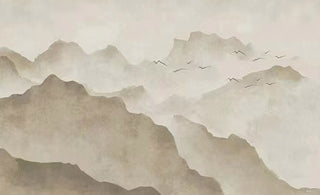
Through our extensive collection, meticulous curation, and expert services, we aim to showcase the rhythmic inheritance that flows through classical oriental art. This inheritance encompasses the harmonious balance between aesthetics, cultural traditions, and the artistic expressions of ancient civilizations.
The Artistry of Classical Oriental Art
Classical oriental art encompasses a wide range of art forms, including painting, calligraphy, ceramics, sculpture, and more. Each form carries its unique essence, reflecting the diverse cultures and historical periods from which they originated.
Ritual" and "rhyme" are important components of oriental aesthetics, with the country's strength, cultural confidence and other factors, oriental aesthetics can be inherited and developed, "ritual" and "rhyme" also continue to penetrate into the lives of the public. Ritual" and "Rhyme" also continue to penetrate into the lives of the general public. If you want to use a word to express the goodness of concrete and abstract things, many people will think of it - "beauty". Beautiful scenery, food, beautiful name ...... "beauty" was first seen in the oracle bone inscriptions of the Shang Dynasty, and the ancient Chinese character for "beauty" looks like a person standing with a headdress on. According to the Shuowen Jiezi (Explaining and Analysing Characters), "Mei" is an acrostic character, which is derived from "sheep" and "big".
In the course of historical development, the meaning of beauty is not the same. But without exception, it is one of people's inner expectations and longings, one of the highest evaluations of figurative and abstract things. In the course of development of China and the West, due to different cultural backgrounds and different historical trajectories, Western aesthetics and Eastern aesthetics are also very different.
Appreciating the Brushstrokes of Chinese Ink Painting
Chinese ink painting, known for its simplicity, elegance, and expressive brushwork, is a cornerstone of classical oriental art. It embodies the philosophy of capturing the spirit of the subject rather than its realistic representation. The artists' mastery lies in their ability to convey emotions, landscapes, and narratives through minimalistic brushstrokes.
Xin Yiyun, a nationalist and educator, has written Twenty Lectures on Aesthetics - Aesthetics of Life in the Era, in which he has sorted out the different aesthetic pursuits of the East and the West over the past thousand years, and he believes that the concepts of sentimentality in the Eastern aesthetics and the concepts of truth in the Western aesthetics are precisely where the "differences and distinctions" of these two major systems of knowledge lie. He argues that the "differences and divisions" between these two systems of knowledge are precisely where they lie.
Preservation and Restoration
Preserving the integrity of classical oriental art is paramount to us. We offer professional preservation and restoration services to safeguard delicate artworks for future generations. Our skilled artisans employ traditional techniques and utilize state-of-the-art tools to protect and restore artworks while maintaining their original beauty and historical significance.
"Heaven and earth have great beauty without words" is an aesthetic proposition put forward by Zhuang Zi, who believed that the beauty of heaven and earth derived from "Tao" is difficult to be expressed by words. Aesthetics is a very abstract thing that is difficult to explain in words. Many people think of Oriental aesthetics as "mysterious", as if it were covered with a soft veil. Zen, poetry and other spiritual feelings and temperament personality, should not be overly confined to objects.
Among them, "etiquette" and "rhyme" are important components of Oriental aesthetics. China has a reputation as a "state of etiquette", and etiquette has always played an important role in social life for thousands of years. Qian Mu, a master of Chinese culture, once said, "In order to understand Chinese culture, we must stand higher to see the heart of China. The heart of Chinese culture is 'rites'." Rites contain various ceremonies that "enable all things to flourish and grow under the balanced and harmonious order of the universe."
Regarding "rhyme", Huang Tingjian, a famous writer and calligrapher of the Northern Song Dynasty, once proposed that "all calligraphy and painting should be viewed in rhyme"; Lu Shiyong, a Ming Dynasty writer and literary theorist, emphasised the importance of "rhyme", saying that "when there is rhyme, there is life". The Ming Dynasty writer and literary theorist Lu Shiyong emphasised the importance of "rhyme", which means "if you have rhyme, you will live; if you don't have rhyme, you will die". "Rhyme" is a unique aesthetic category in the ancient Chinese aesthetic system, which is a highly concentrated crystallisation of Chinese aesthetics. Poetry, calligraphy and music all emphasise the existence of "rhyme".
Preserving the Essence of Classical Oriental Art
As we conclude this journey into the world of classical oriental art, we invite you to explore Oriental Aesthetics and experience the rhythmic inheritance that flows through our collection. Our commitment to preserving the essence of classical oriental art, combined with our comprehensive services, sets us apart as a trusted destination for artists, collectors, and enthusiasts alike.
Welcome to Oriental Aesthetics, where we appreciate the beauty and cultural significance of classical oriental art. We are a leading provider of systematic, high-quality professional services for oriental artists, collectors, and enthusiasts who share a deep passion for this rich artistic heritage.
























